The Porsche 959 Is Not the Car You Think It Is
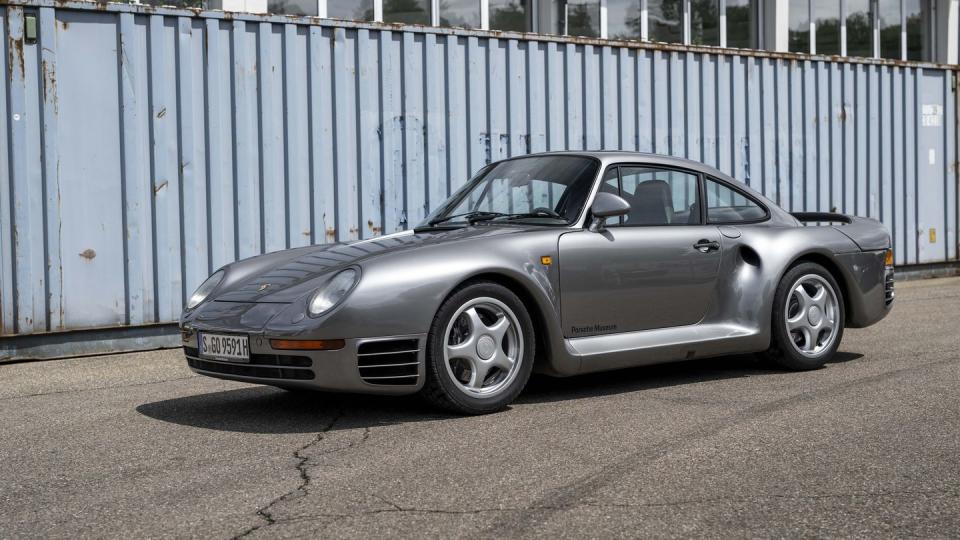
When you first glance a Porsche 959, you’ll be shocked. Not at the car’s overbearing presence, but that your first thought isn’t, “Holy smokes a 959!” Instead, your brain pauses, working over the car’s curves. “Wait, is that a 959?”
Even sat apples-to-apples by an actual Eighties 911, the 959 looks, feels, smells, and drives a lot like an Eighties 911. Profound, I know. But the observation grates against the decades of praise heaped on Porsche’s late-Eighties supercar, praise which built a heightened expectation the car was unlikely to match.
Perhaps that expectation endured because 959s are rare. Porsche built fewer than 300 examples, plus an additional 29 examples of the 959 S. Not exactly hen’s teeth, but I’d sat in more McLaren F1s than 959s by the time Porsche had pulled eight classics from a Stuttgart warehouse last summer.
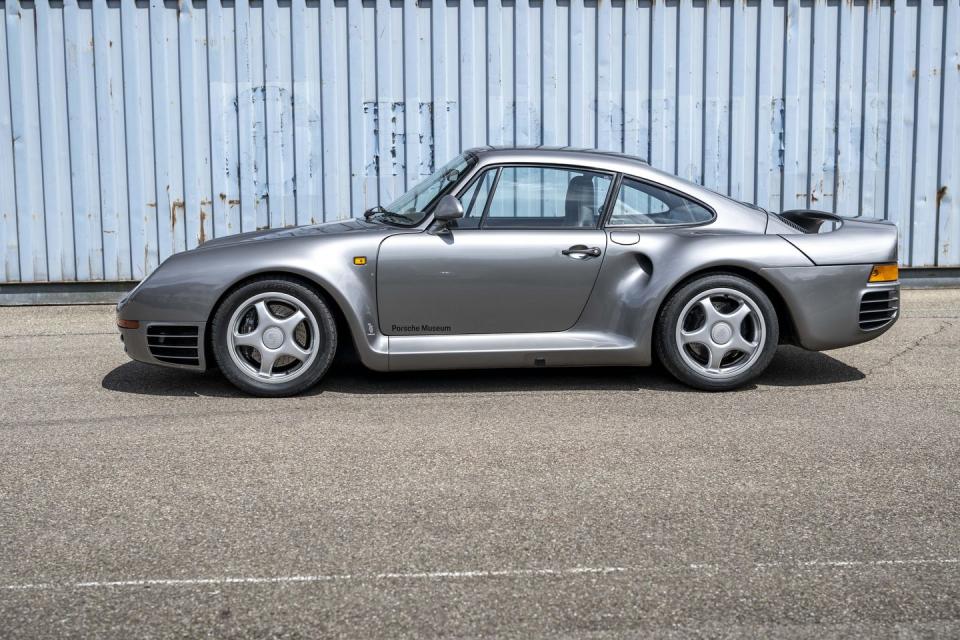
I worked through those classics over the course of a day spent in the German countryside, then finally had a crack at the 959. Parked in a gravel lot next to the bevy of other Porsches, it’s simple enough to make out the genetic through lines.
Visually, the 959 looks like a G-Body 911 made of warm saltwater taffy. From the 959’s aerodynamic shape, you see how the 911 pivoted into the 993 generation, equipped with more rounded, bulbous lines that gave way to the fried-egg 996 and even its even-longer, more laid-back profile. The later Panamera sports that same no-right-angles aesthetic as the 959, and the supercar’s design even echoes in the early Cayenne’s front end.
If the exterior does just enough to separate itself from the 911 after careful observation, the interior does not. It’s a reminder that before SUVs and roadsters and sedans, the Porsche corporate portfolio was far slimmer; Porsches were boutique vehicles built in modest numbers for in-the-know enthusiasts who cared far less about interior niceties than the interplay of four tires screaming tires and a good backroad.
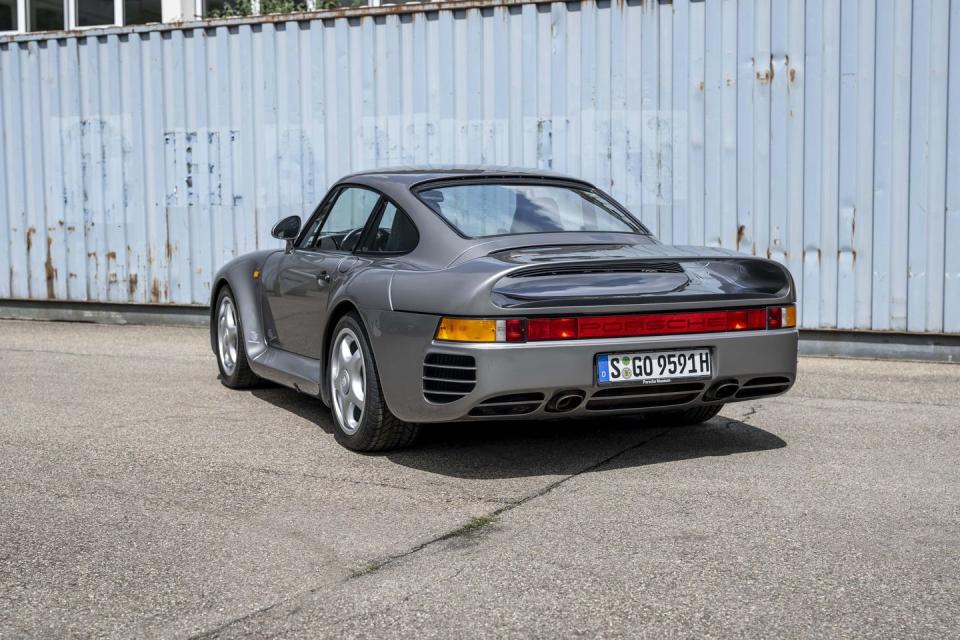
I found this visual introduction all a bit underwhelming. But after coming to grips with the 959 on the road, it proved to be a crystal ball that divined where fast cars were headed. More importantly, it paved the path to get there.
Compare it to one of the 959’s contemporaries: the Ferrari F40.
Save the odd modern McLaren, we don’t make cars as raw and essential as the F40 anymore. But as a global society we make many, many fast cars in the mold of the 959, packing increasingly complex technology into ever-tighter spaces to produce overwhelming, seamless, and nearly effortless speed.
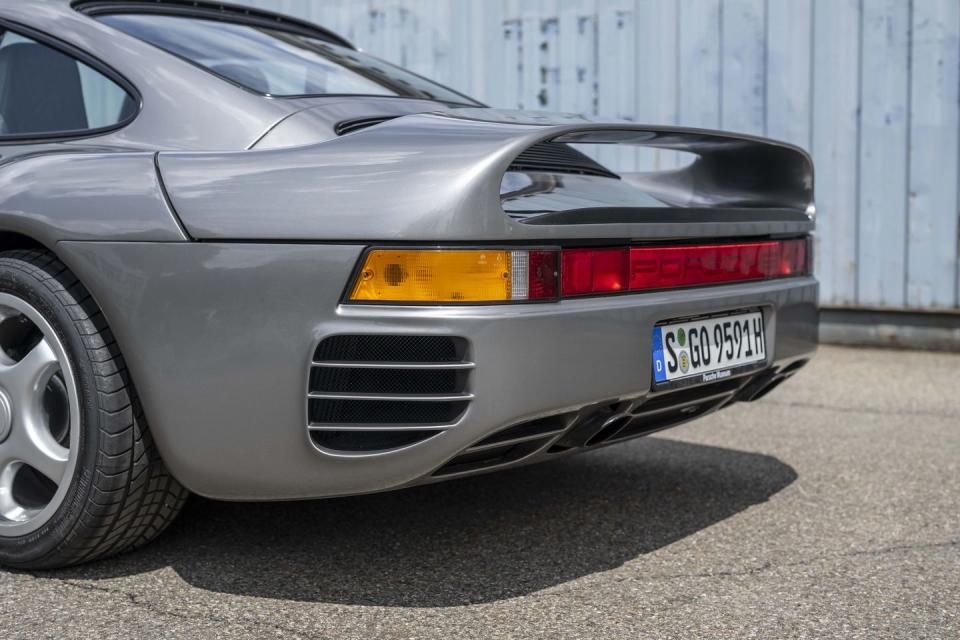
The 959’s marvelous drivetrain led the way in that respect.
You anticipate huge lag from its 2.85-liter flat-six, given its twin snails first delivered boost during the Reagan administration. Instead the mill produces a low-end punch that feels well beyond its displacement, followed by an all-consuming time-warp rush at the far reaches of the tach; The 959 would still claw at the rear bumper of modern supercars when its engine winds up.
Porsche claims a 3.9-second sprint to 60 mph from a stop, which won’t light your hair on fire in 2024, but the 959’s top end is still shockingly quick by modern standards.
The engine pairs to an electronically controlled 4WD system that allows a permanent torque split under normal driving conditions. The system can shuttle power from one end of the car to the other when wheel slip is detected, and crucially, it’s also shuttling that power around when slip isn’t detected, setting the 959 apart from many of its roadgoing contemporaries.
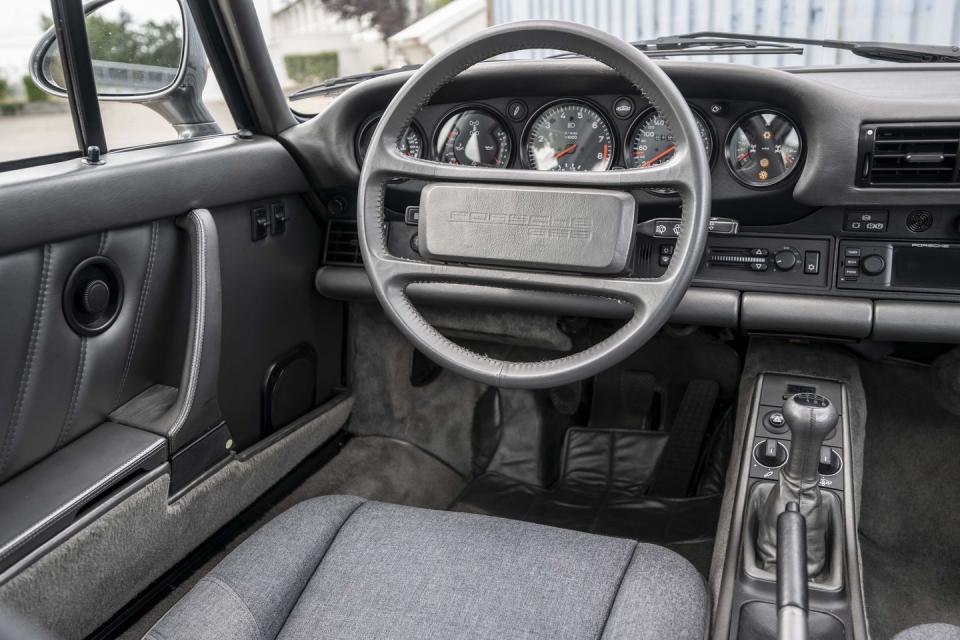
High-pressure hydraulics actuate the multi-plate clutch at the center of the system, which replaces a conventional center differential. It’s a fabulously innovative and complex system, well worth further investigation, and one that far outstrips many modern all-wheel- and four-wheel-drive systems for its ability to move power to the wheels that need it most.
It’s a bit miraculous then, that all this complexity—the turbochargers and turbocharging accoutrement and the complex 4WD system with its hydraulics and a lack of modern composite construction—amounts to just under 3200 pounds. That's roughly the weight of BMW’s E36 M3 sedan.
With time, most of Porsche’s lineup has inherited the 959’s defining qualities: breathtaking straight-line thrust, a sense of overriding quality, and complex drivetrains that feel absolutely resolved at low speeds and granite-slab reliable at autobahn speeds.
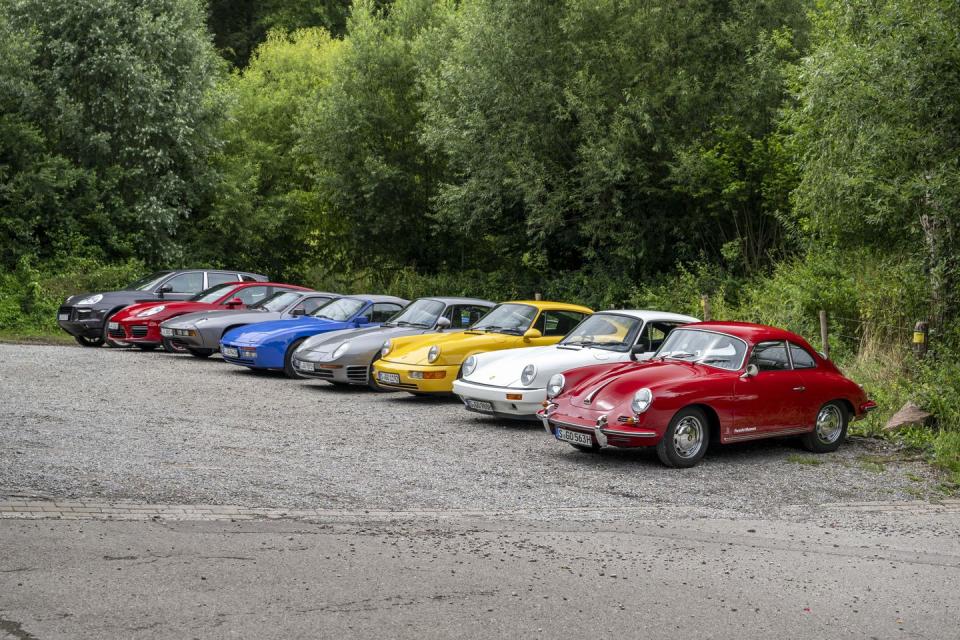
The 959’s spiritual successor is not the 911 GT3 or the 911 Turbo, but rather something like the Cayenne Turbo S that was parked alongside it, a vehicle that offers surpassing comfort, ludicrous acceleration, and little in the way of outward fanfare or sex appeal. After a short drive, I now admire the 959 far more than I love it, but it’s worthy of our admiration nonetheless.
You Might Also Like

 Yahoo Autos
Yahoo Autos 